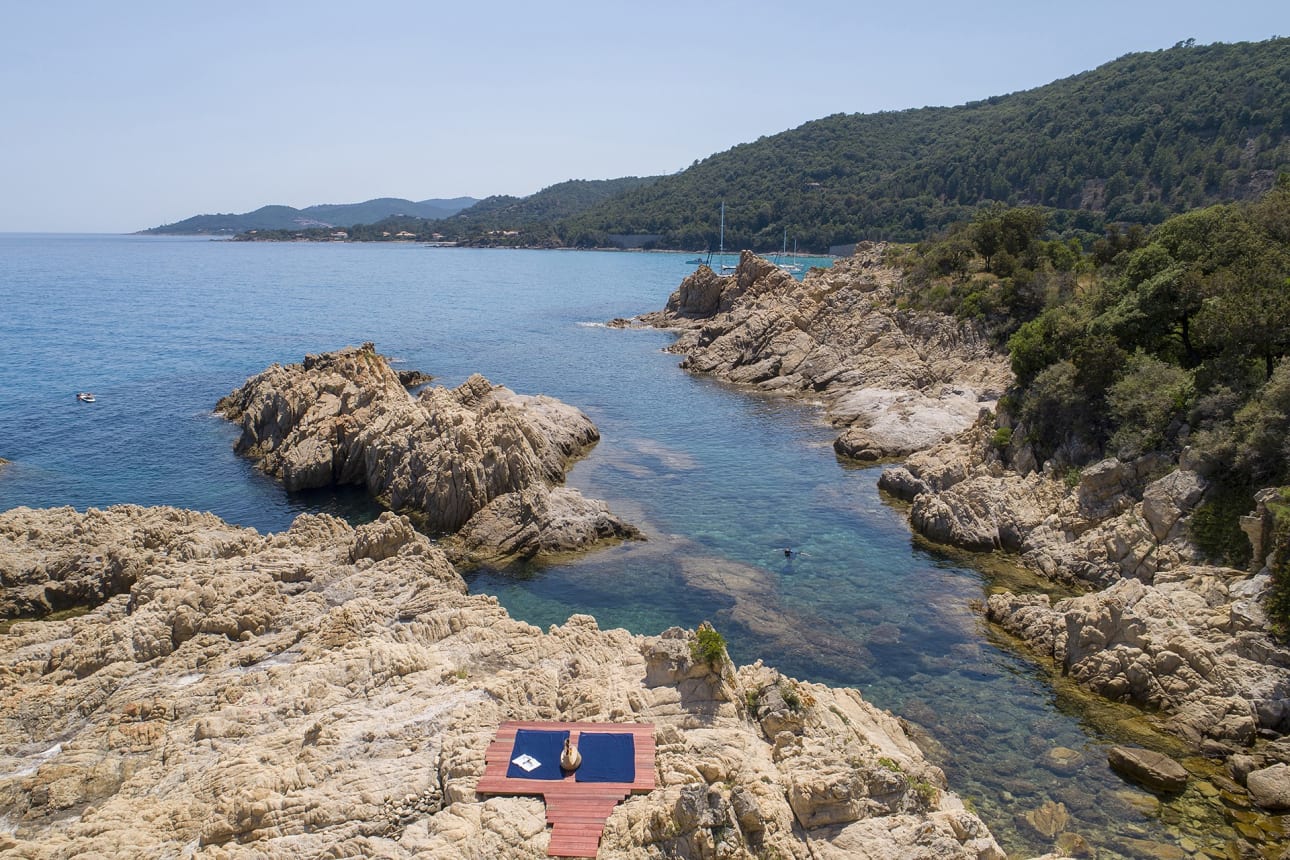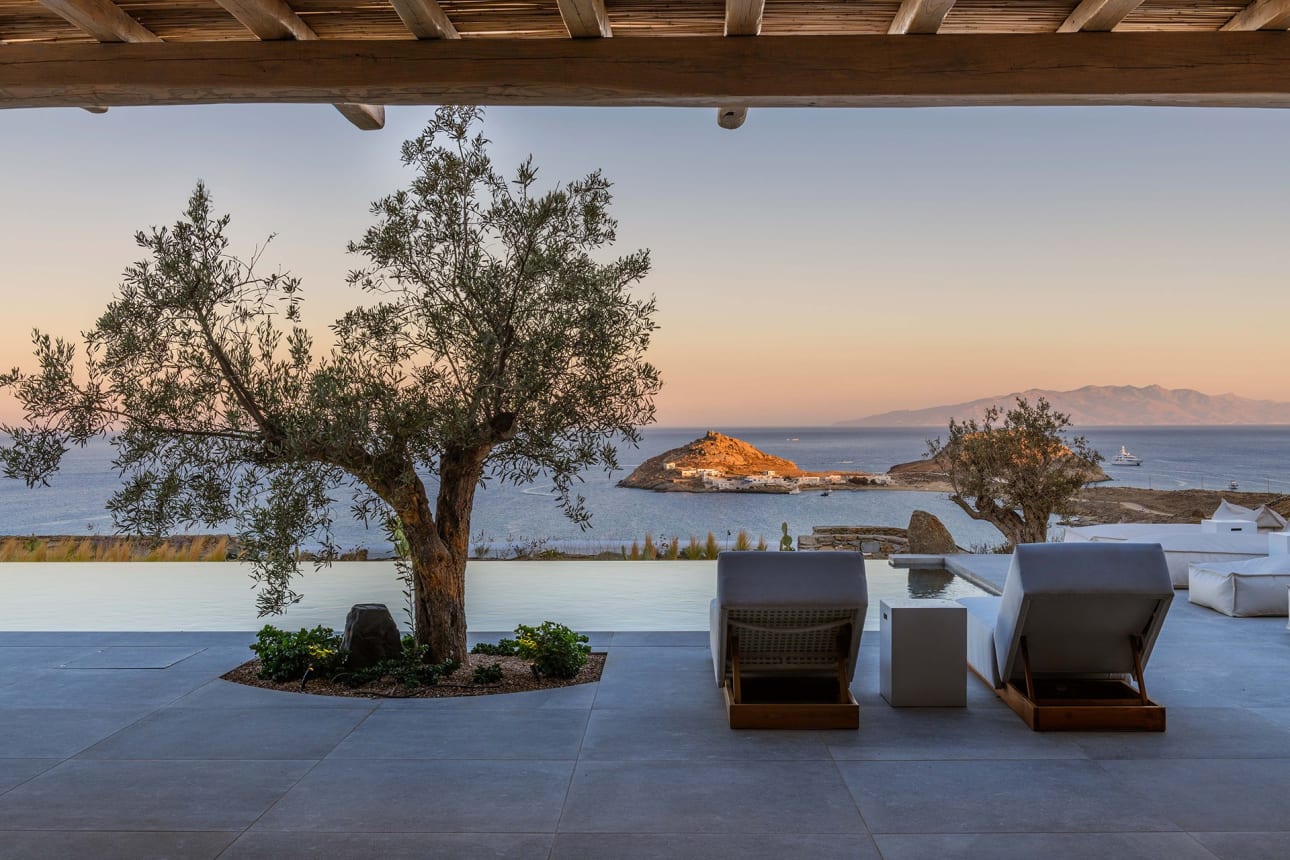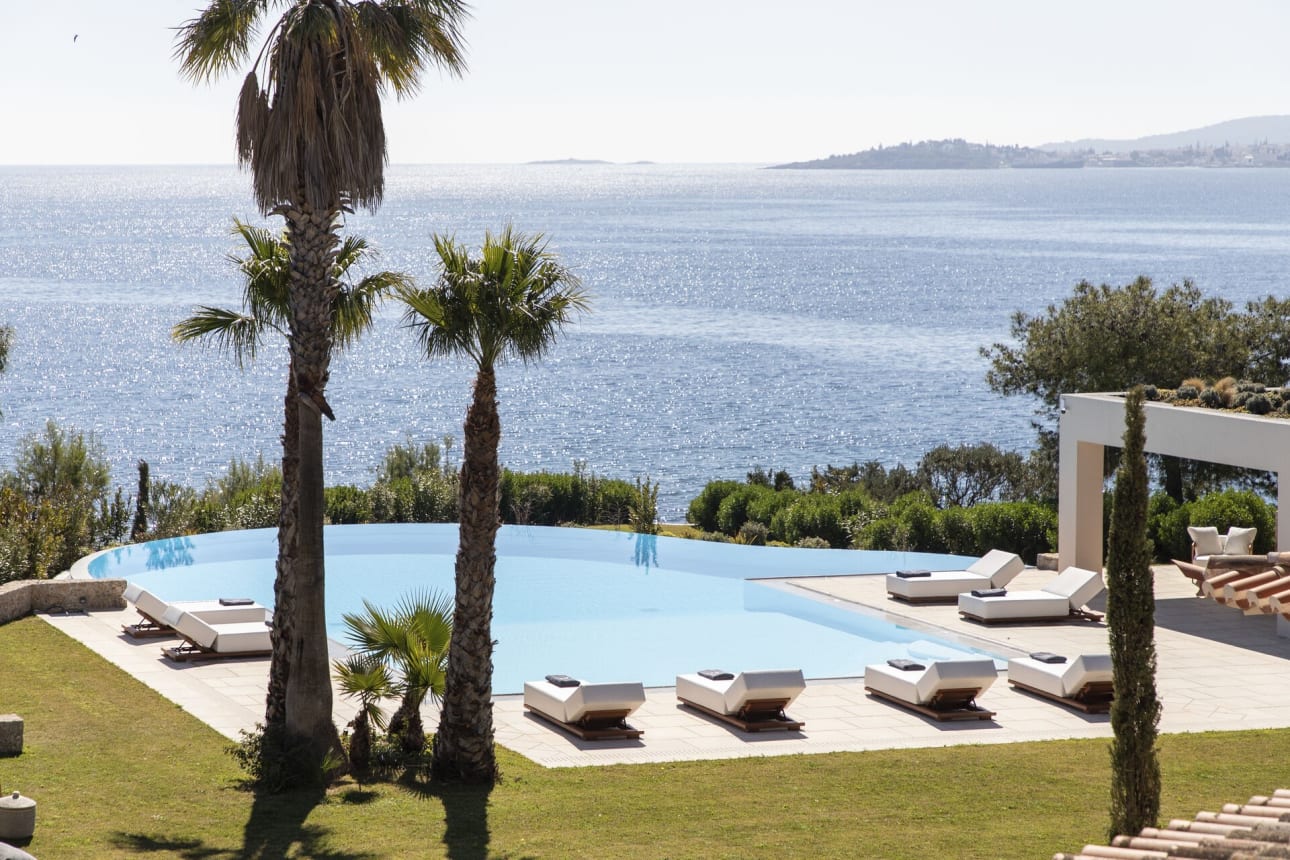Historical places in Europe: UNESCO World Heritage Sites and awe-inspiring monuments
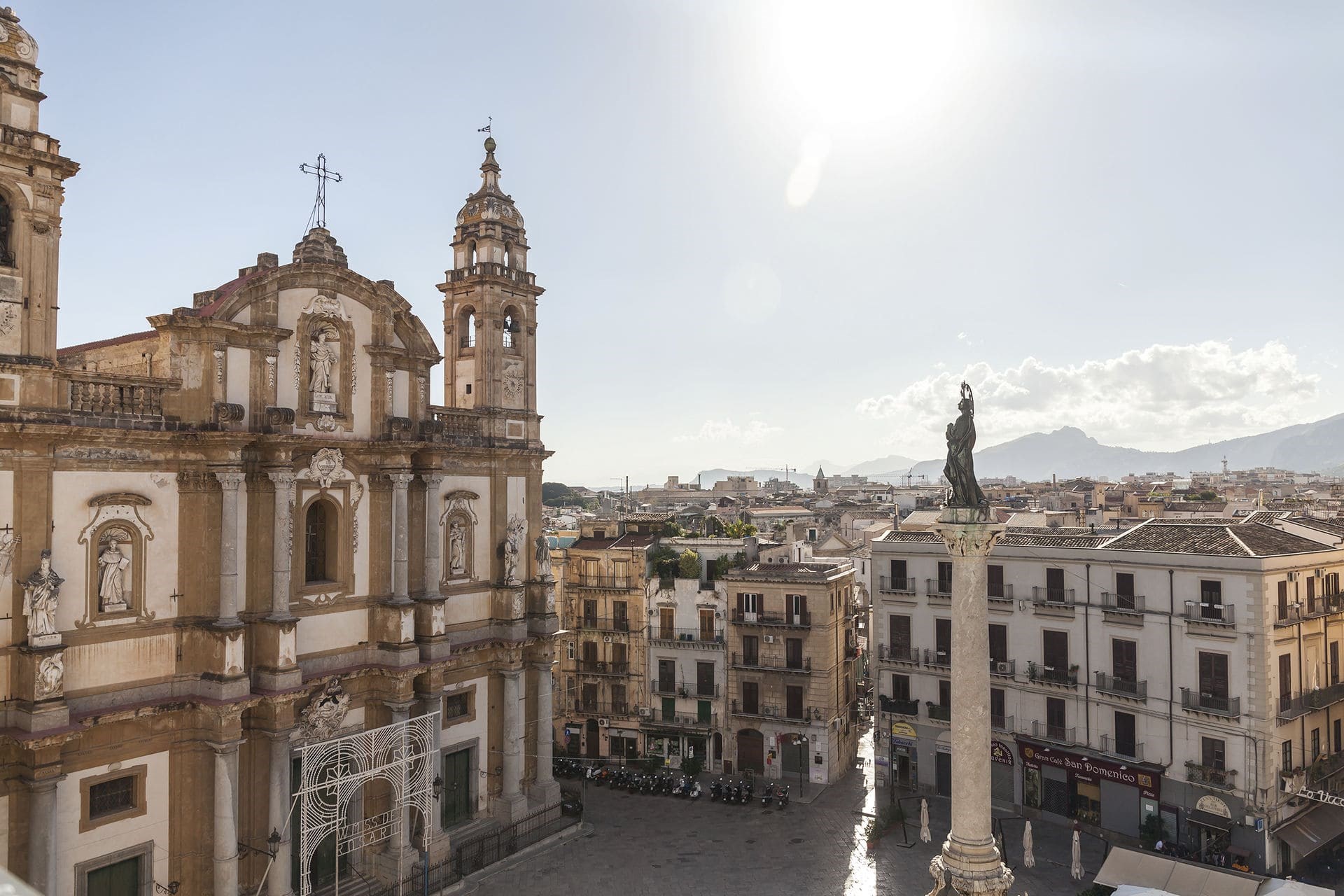
Europe is home to an astonishing array of historical sites, each telling their own stories of past cultures, conquests and architectural styles. From the diverse island of Sicily to the charming towns of Corsica, the Mediterranean region boasts some of the most breathtaking UNESCO World Heritage Sites and historical monuments. Whether you're travelling solo, with a partner, or in a larger group, exploring these places offers a profound insight into the past and a truly unforgettable experience. In this blog, we'll delve into our favourite historical places in some of our top Mediterranean destinations.
Historical sites in Sicily
Sicily, the largest island in Italy and the Mediterranean, is a treasure trove of history. Whether you are fascinated by Greek temples, Roman theatres, Norman cathedrals or baroque splendour, Sicily offers a range of unparalleled historical sites. Here are some of our recommended places to visit on your next trip:
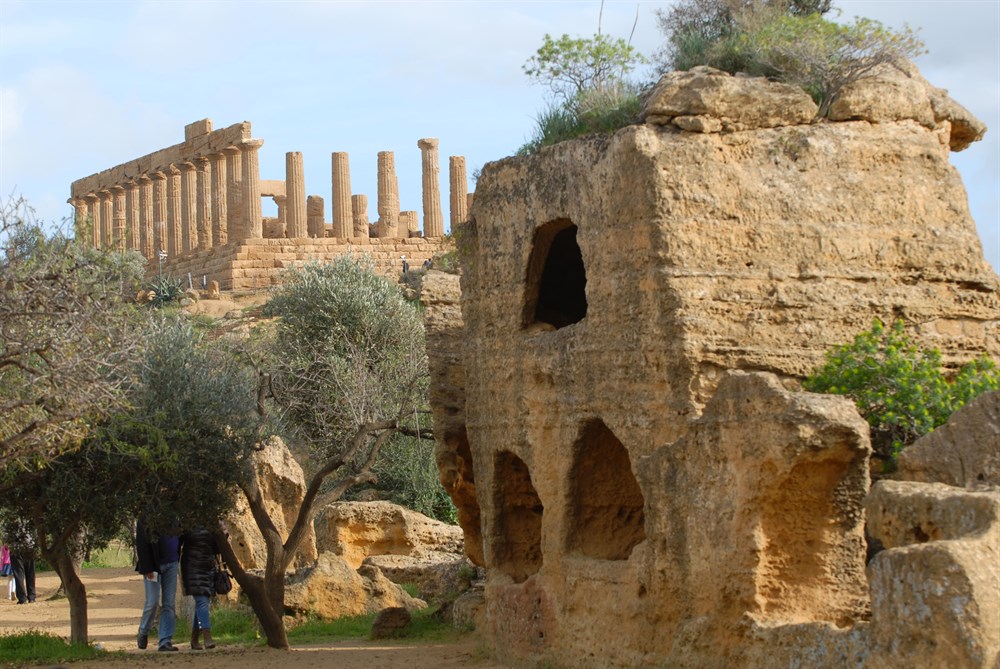
The Valley of the Temples: located near Agrigento in the southwest of Sicily, this UNESCO World Heritage site is one of the most significant archaeological sites in the world, and a prime example of ancient Greek architecture. Best visited during spring or autumn, the Valley of the Temples comprises eight temples devoted to Greek gods, the restored Garden of Kolymbethra, and various other remains. If you’d like to know more about The Valley of the Temples, see our guide to archaeological sites in Sicily.
Villa Romana del Casale: famous for its intricate and well-preserved mosaics, this Roman villa - another UNESCO Heritage Site - is located near Piazza Armerina, in the Sicilian hinterland. Built in the 4th century CE, the villa and its captivating mosaics allow visitors to discover the tastes, styles and customs of wealthy Romans. We’d recommend visiting the site early in the morning or late afternoon during summer, to avoid the heat.
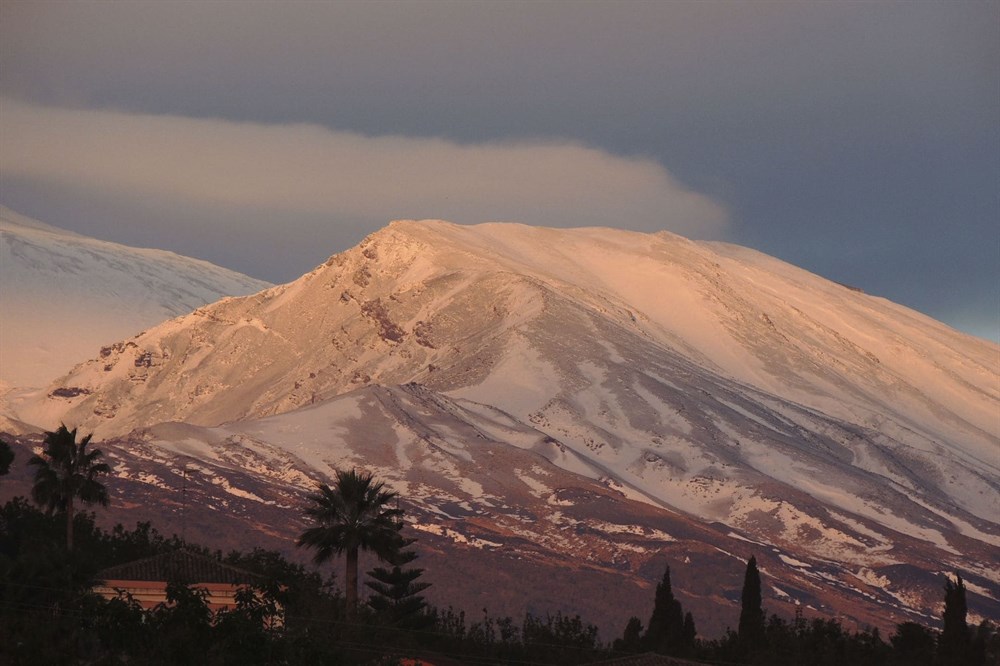
Mount Etna: as the highest active volcano on the continent, Mount Etna offers a unique blend of natural history and ancient lore. Etna dominates the nearby landscapes in the east of Sicily and, though its worst eruptions have brought destruction, they have also enriched the soil for the surrounding citrus and vines. Guided tours, especially those at sunset, provide a dramatic view of this natural spectacle. Explore our range of guided Mount Etna tours, from wine tasting to 4x4 trips.
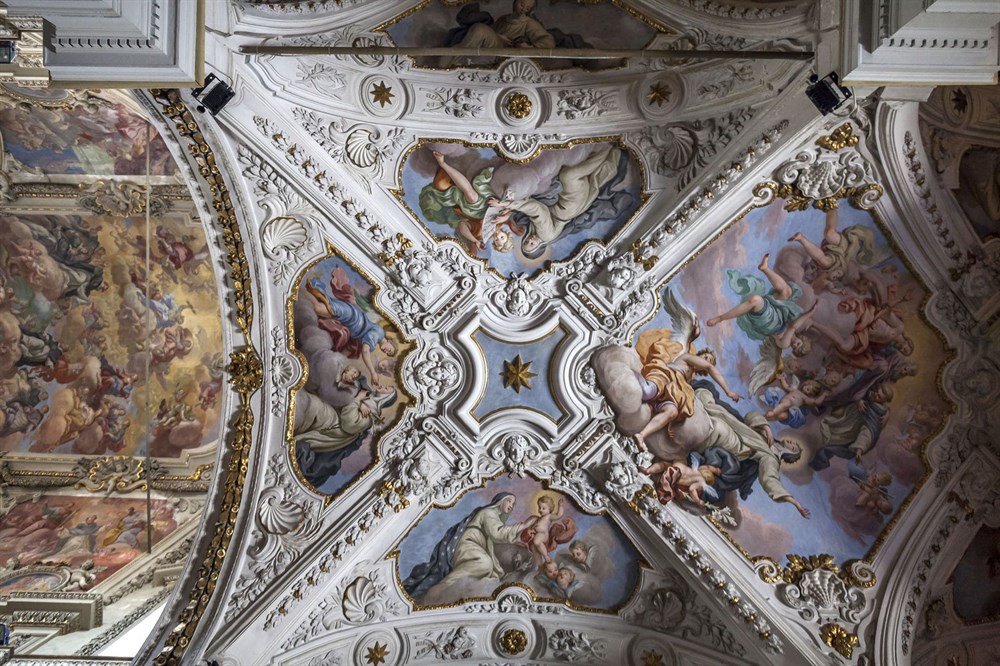
Palermo Cathedral: an architectural marvel in Sicily’s capital, Palermo, this cathedral has a mixture of different architectural styles spanning several centuries. The Arab-Norman cathedral is among nine monuments that form a UNESCO World Heritage Site of Palermo, Monreale and Cefalù. Entry to the cathedral is usually free, with small fees for accessing certain areas like the roof or the treasury.
The Graeco-Roman Theatre of Taormina: Taormina is an enchanting destination with restored mediaeval buildings and streets that look out to Mount Etna and the sea. Its Graeco-Roman theatre is not only a historical site but also hosts a variety of events, from plays and operas to concerts and cinema festivals. It's particularly stunning to visit around sunset, as views from the site are spectacular.
Historical sites in Puglia
Puglia, the heel of Italy's boot, is dotted with remarkable historic sites and numerous pretty towns and villages that are full of architectural, historical and cultural interest. View some of our favourites below:
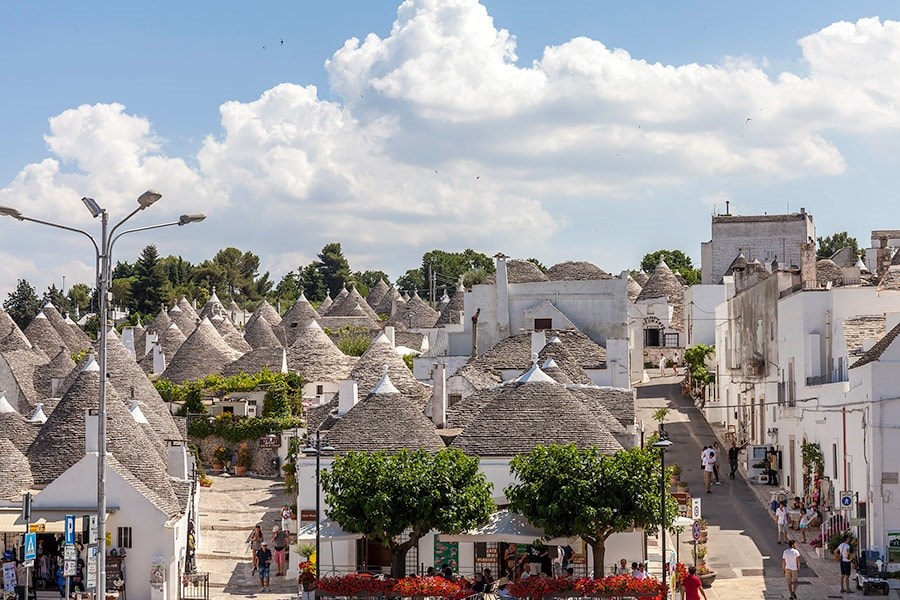
The trulli of Alberobello: these distinctive stone dwellings with conical roofs are iconic to Puglia and the trulli-packed town of Alberobello is a UNESCO World Heritage Site. You can wander along its picturesque streets at your own pace, stop at a nice café for refreshments and soak up the atmosphere. Or, why not stay in a trullo of your own on your Puglian stay? Search our collection of charming trulli villas for a truly authentic experience.
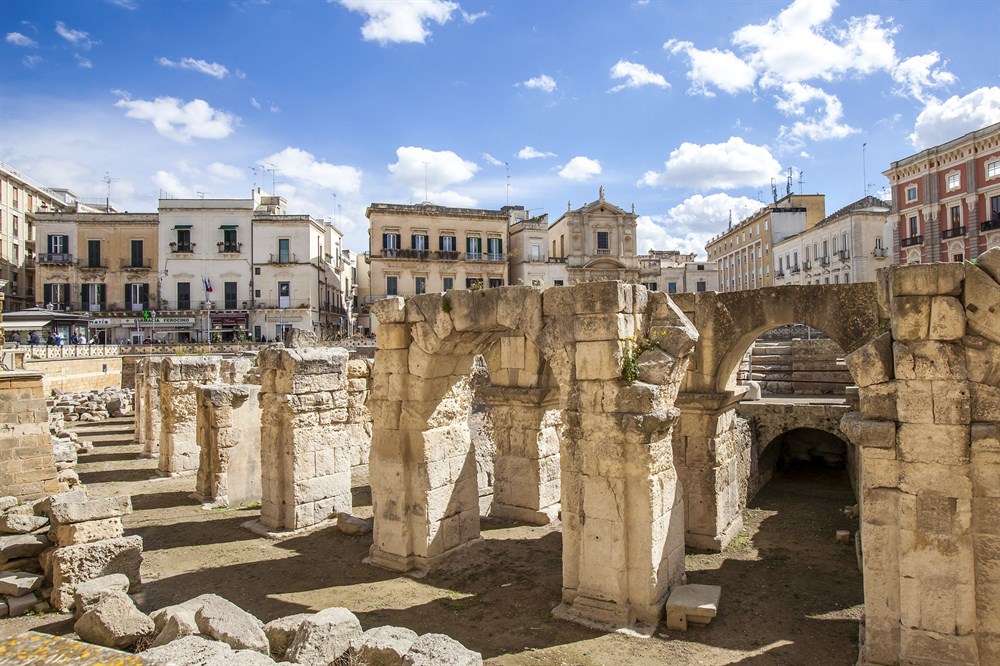
Lecce's baroque architecture: Lecce is the main town in the Salento region of Puglia, built long ago in local limestone and boasting plethora of baroque buildings featuring detailed façades and ornate interiors. Highlights include the Piazza del Duomo, the Basilica di Santa Croce, and the Church of Saints Niccolo’ and Cataldo. Many churches and buildings are free to enter, with guided tours available to enrich your visit.
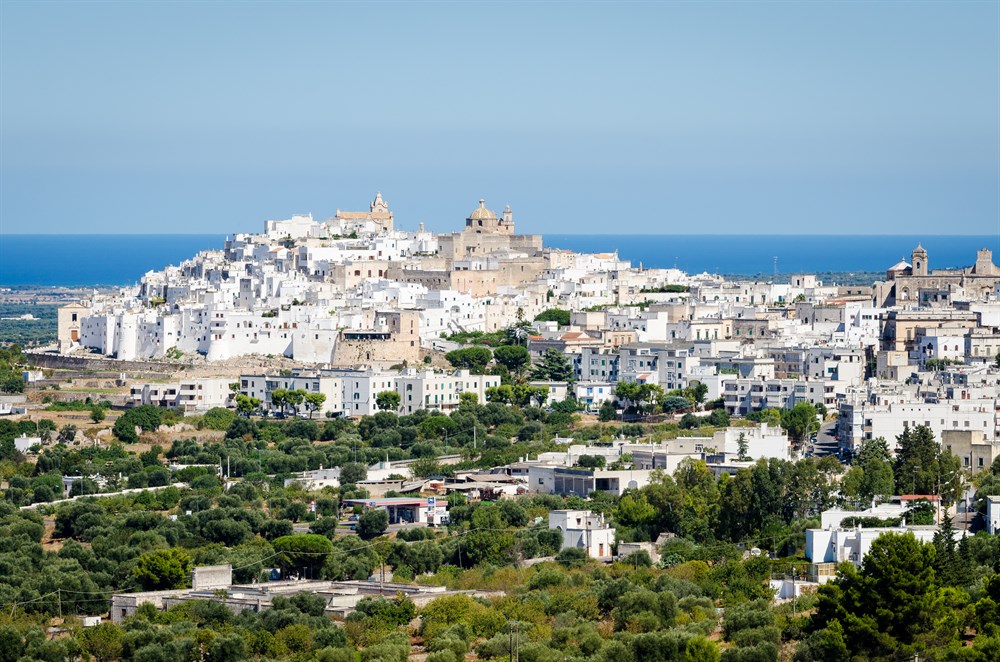
Ostuni, the White City: known for its whitewashed walls and medieval architecture, Ostuni presents its visitors with entwining passages to explore, wonderful views of the surrounding countryside, and a stunning Gothic cathedral at its highest point. The white lime-washed buildings in its historical centre were originally built to lighten up Ostuni’s dark, labyrinthine mediaeval streets, and now dazzle visitors with their beauty.
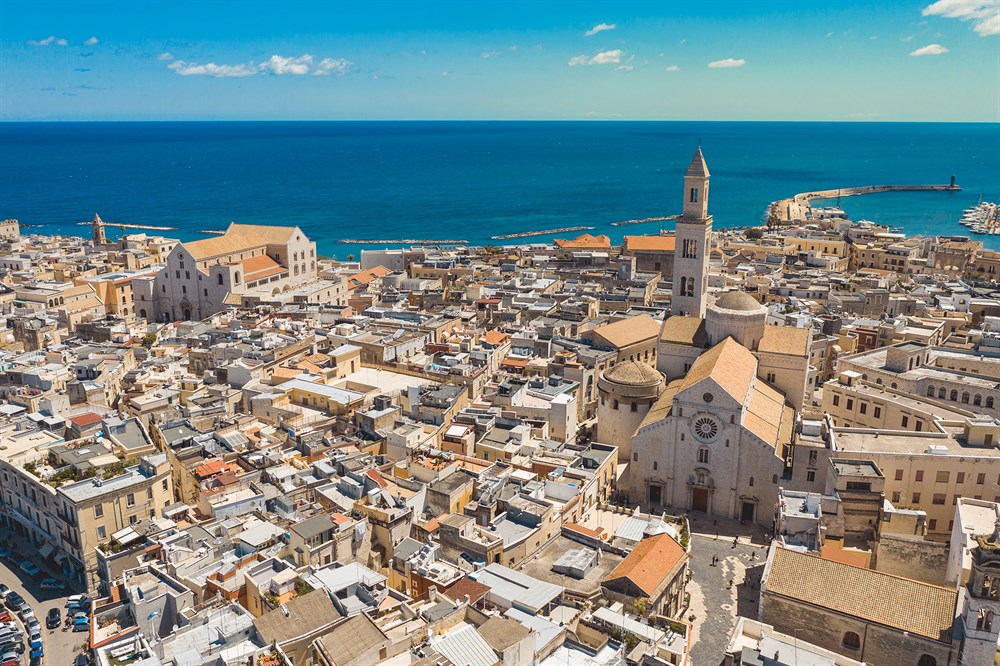
Basilica di San Nicola in Bari: Puglia’s capital was first elevated to city statues by the Romans and has been shaped by a variety of rulers throughout its history. The 12th century, romaneque Basilica, which has great religious significance, is the focal point of Bari’s old town. Housing the relics of Saint Nicholas, it is an important pilgrimage destination and reflects a fusion of cultures from the east and west.
Castel del Monte: just outside of Bari lies Castel del Monte, built by Emperor Frederick II in the 13th century. This geometrically intriguing castle is a UNESCO World Heritage Site and a unique example of mediaeval architecture. Entrance is around €7 for most adults, with detailed guided tours available.
Historical places on the Greek Islands
The Greek Islands are not only known for their stunning landscapes but also for their rich history and their mythological relevance. The sites listed below are perfect for travellers who want to indulge in historical, architectural, cultural experiences while journeying through time. Whether you're exploring ancient Greek ruins, Venetian fortresses, or Byzantine monasteries, you'll gain a fascinating insight into the history of Greec.
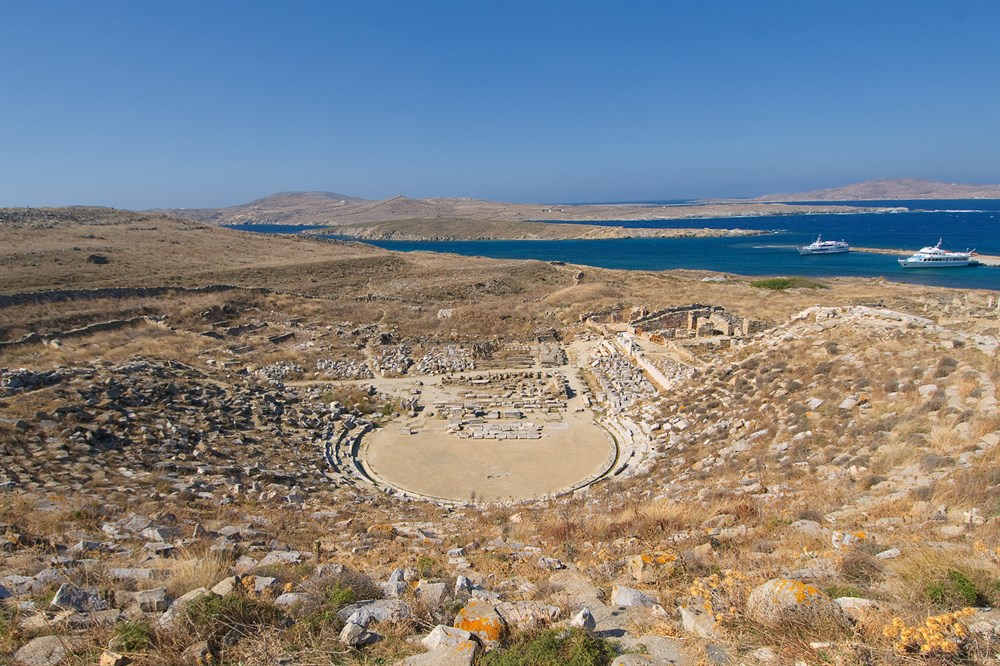
Delos: less than an hour away from Mykonos by boat, the sacred island of Delos is one of the most important mythological and archaeological sites in Greece. It is hailed as the birthplace of Apollo and is one of the largest open-air archaeological sites in Greece.
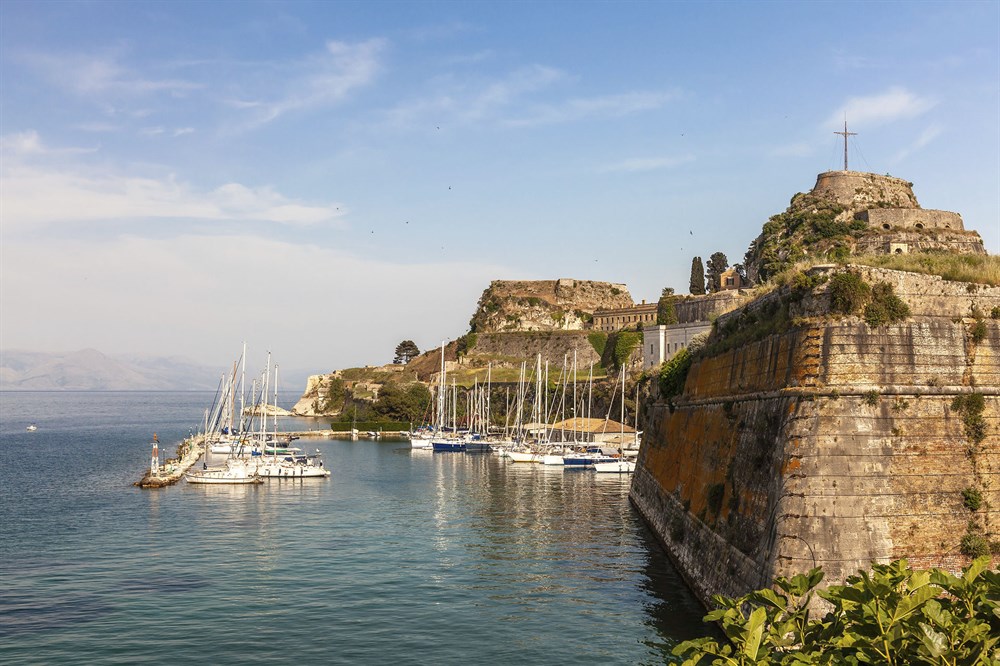
The old fortress of Corfu: this Venetian fortress dates back to the 15th century, and provides insights into Corfu’s strategic importance in maritime history. The site is accessible for a small fee, and its high walls offer stunning views of Corfu Town and the coast beyond.
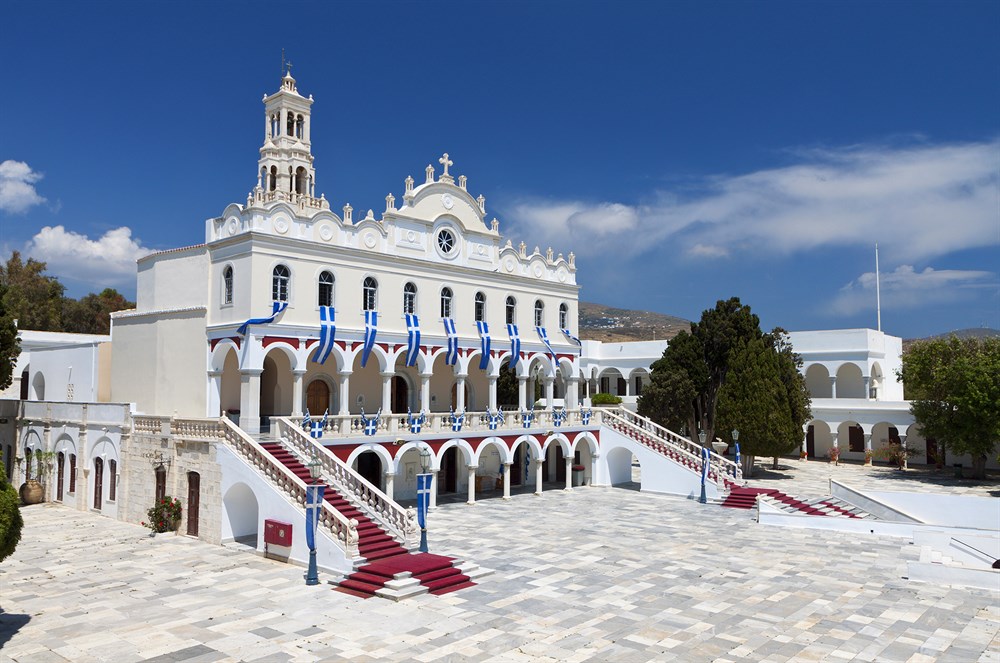
Marble craftsmanship villages, Tinos: the villages of Pyrgos and Volax on Tinos are famous for their marble art and sculptures, a tradition that reflects the island's architectural heritage. Workshops and galleries are open to visitors, offering a hands-on look at this craft. Read more about Tinos’ history and what makes it unique.
Temple of Aphaia, Aegina: positioned atop a hill, this well-preserved ancient Greek temple forms a sacred triangle with the Parthenon and the Temple of Poseidon at Sounion, making it a significant archaeological site.
The Venetian castle, Zakynthos: located on the hill over Zakynthos Town, this castle has roots tracing back to Byzantine times, although most of the current structure is from the Venetian period. It offers a historic exploration with views over the town and port.
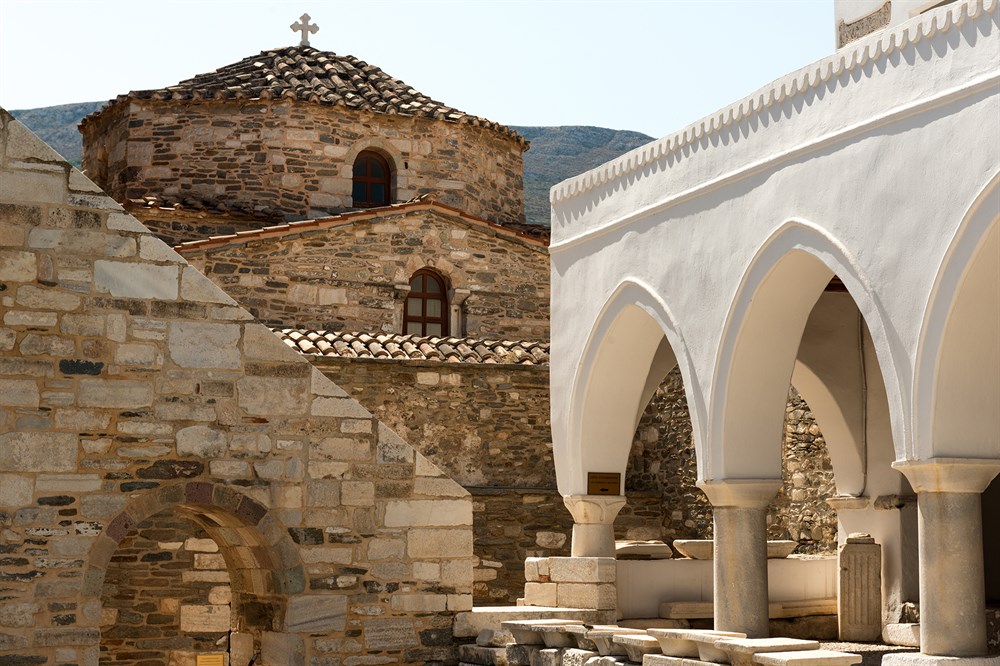
Panagia Ekatontapiliani, Paros: located in the town of Parikia and known as the Church of 100 Doors, this is one of the oldest and most significant Byzantine churches in Greece. It is open to visitors, and its architecture and religious artefacts are impressive.
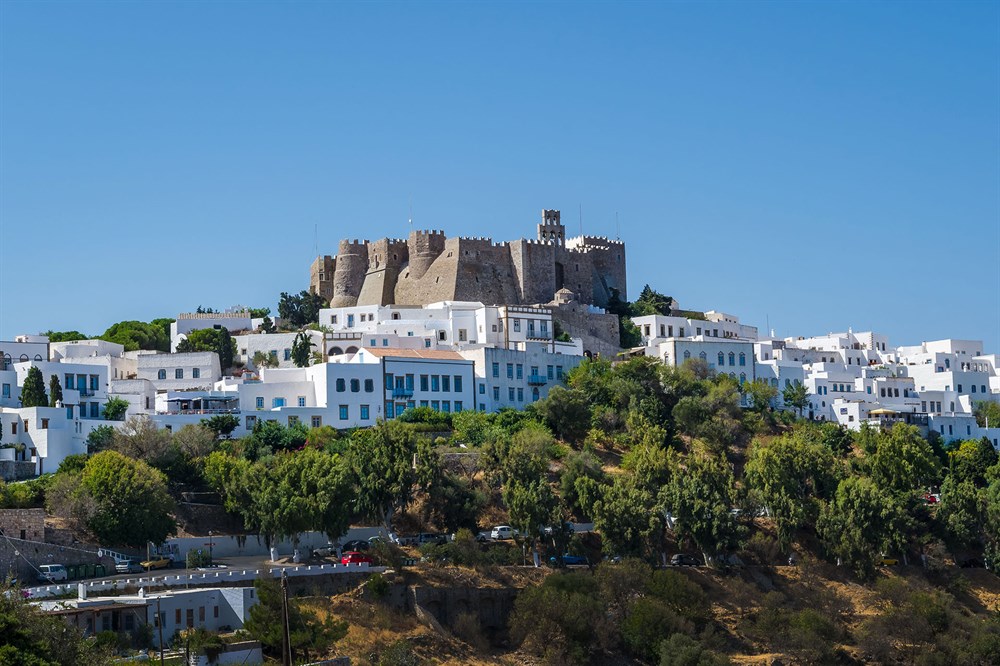
The monastery of Saint John the Theologian, Patmos: founded in 1088, this fortified monastery is a religious landmark next to where St. John wrote his Book of Revelation. It is a UNESCO World Heritage Site and its museum safeguards a dizzying array of religious relics and artefacts.
Historical sites in Corsica
A cultural melting pot of the Mediterranean, Corsica has changed hands numerous times and boasts a long eventful history. If you’d like to discover more about this intriguing island, we’d recommend visiting these historical sites:

Filitosa: the prehistoric site of Filitosa is famous for its mysterious granite menhir statues and early Corsican artefacts, including items from the Mesolithic, Neolithic and Bronze ages. There is a museum on site, and its beautiful natural surroundings provide a great setting for a relaxed excursion.

Calvi's citadel: this impressive 15th-century fortress is set on a rocky promontory and offers stunning views and a deep dive into Corsican history. Access is free, and the site is particularly enchanting during the late afternoon, perhaps after exploring Calvi’s winding streets and stopping for an al fresco lunch.

Sartène: referred to as the most Corsican of Corsican towns, Sartène is built on several levels and offers visitors a glimpse of mediaeval island life. With its tightly knit buildings and cobblestone streets, many areas are freely accessible, with guided tours available to explore its storied past.

Bonifacio's citadel: perched on dramatic cliffs, Bonifacio houses a 9th-century fortress that offers panoramic views and a walk through centuries of military architecture and history. The citadel and the Old Town can be explored for free, though certain museums and guided tours within are ticketed.
Aleria: explore the remains of this ancient Roman town in the southeast of the island, including its fort and an archaeological museum. The site encapsulates the layered history of Corsica from its early days and may give you a glimpse into Roman life.
Book a stay in a historic Mediterranean villa
Before becoming part of our exclusive collection of villas, many of our properties have had other lives. Some were high-born – castles, aristocratic residences and noble hunting lodges – others had more humble agricultural origins. All of them have been lovingly brought into the 21st century, but their inspiring architectural identities remain, creating uniquely atmospheric ambiences in which to spend a holiday. See our collection of historic properties to browse a few of these gems, and then get in touch with our expert Villa Specialists if you have any questions. Alternatively, check live availability on our site and make use of our 24/7 online booking facility.
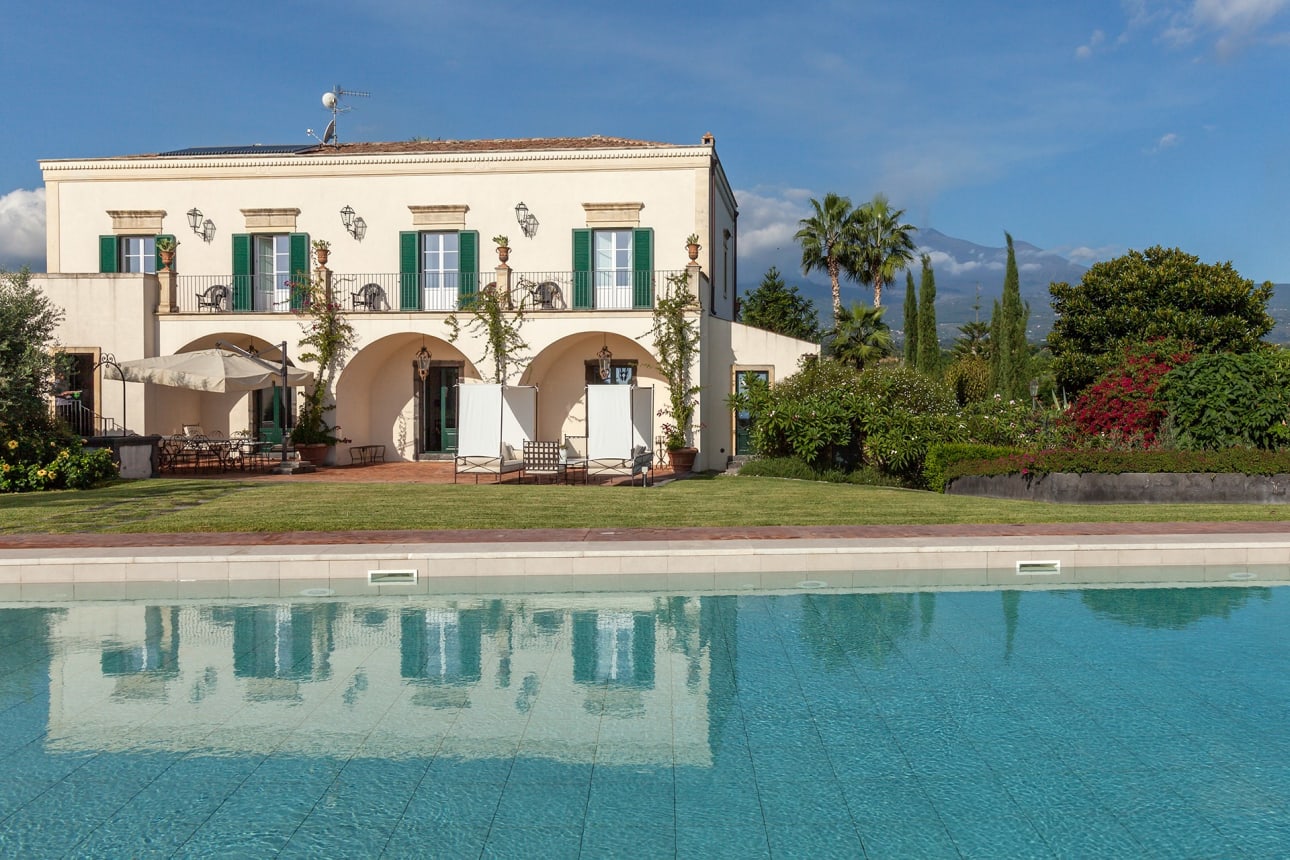
.jpg)
